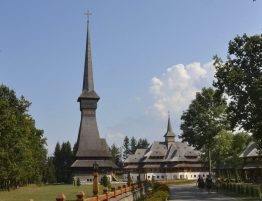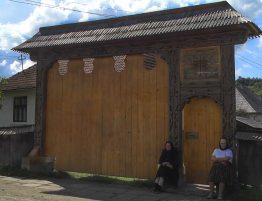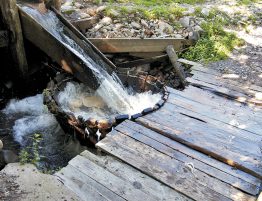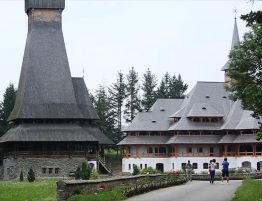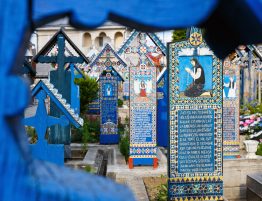
The Merry Cemetery in Sapanta, which is part of the UNESCO heritage, is one of Romanians’ most popular holiday destinations but also of foreigners, who are impressed with the metaphors written by folk craftsmen on the crosses in the cemetery situated in the very centre of the village.
The fun making, the joking tone but also the irony illustrates in only a few stanzas the life of those who passed away, the Merry Cemetery being one of the few final resting places in Europe where visitors look with amusement at the past of some strangers. Annually, tour operators from Maramures County say that tens of thousands of people visit the cemetery either in an organized tourism form or in a private one.

Crosses of The Merry Cemetery photo Cristina Nichitus Roncea
Sapanta – Bit of History
It is one of the landmarks of Maramures County, along with other three to four attractions that spark the interest also abroad. The villagers were quite inspired and developed small crafts that confer value to the area through small souvenirs which tourists take home to remind them of their brief passage through Sapanta. The area has a huge tourist potential, but as any other place in Maramures, it is insufficiently promoted and capitalised on from a tourism standpoint.
In the past 20 years, Sapanta has positioned quite well on the map of domestic and foreign routes, and locals, including the two religions — Orthodox and Greek Catholic — each contributes in its own way to promoting tourism.
“We have revived monastic life this time, by rebuilding in Maramures the old monastery in Peri, village now on Ukraine’s territory, a worship place that hundreds of years ago played an
essential role in maintaining the Orthodox faith in these places. The monastery was built of wood and has a tower of over 70 meters in height, being one of the highest buildings of its kind in Transylvania, and maybe in Europe, as well. Monastic life was re-brought and the monastery has already entered the circuit of those who visit our village and the Merry Cemetery,” said Orthodox priest Grigore Lutai from the village of Sapanta.
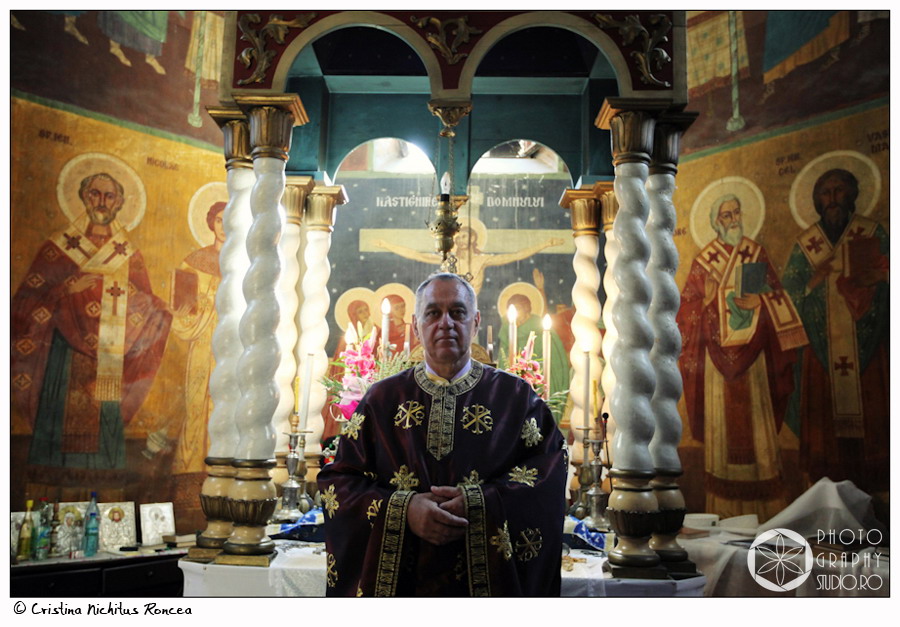
People from Sapanta, Maramures, Romania, photo Cristina Nichitus Roncea
The Crosses and the Epitaphs
The fame of Sapanta is however owed to the “Merry Cemetery,” with its original works of folk craftsmanship thought and launched in the 1940s by local craftsman Ioan Stan Patras and continued today by his apprentice, Dumitru Pop Tincu. Some wooden crosses were remade at the request of the descendants of the deceased (Gheorghe Stan, the only craftsman who makes crosses in Sapanta), preserving the old epitaphs, but the wood has been replaced with another one with greater weather resistance.
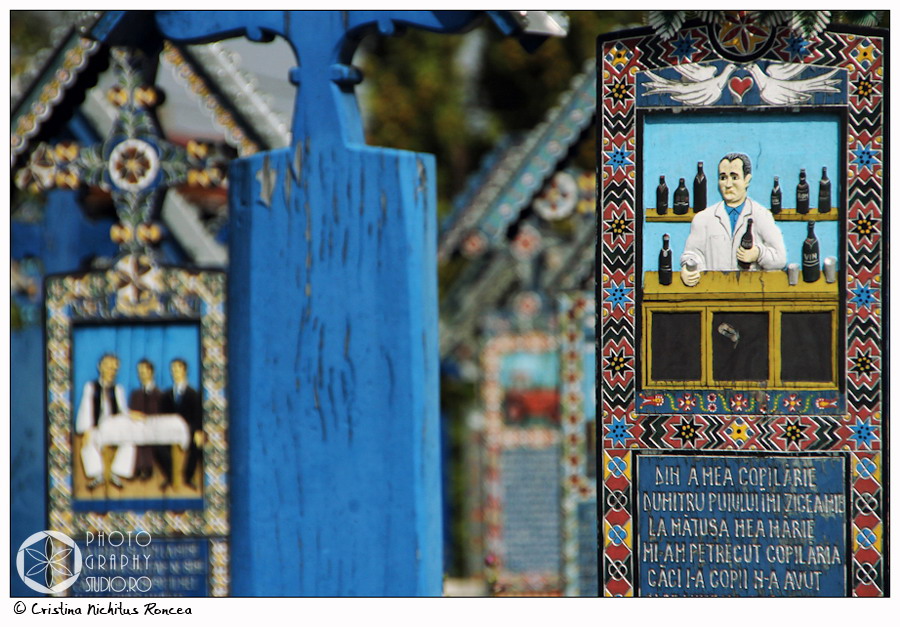
Crosses of The Merry Cemetery photo Cristina Nichitus Roncea
The deep blue color, combined with other colors, some quite striking, has been preserved, and, along the paths, a few crosses of over 50 years old can also be found, relatively well preserved, whose epitaphs about the deceased are easily readable. Crosses attract viewers’ attention by the painted drawings and the poetic text that accompanies, in a few lines, moments from the life of the deceased.
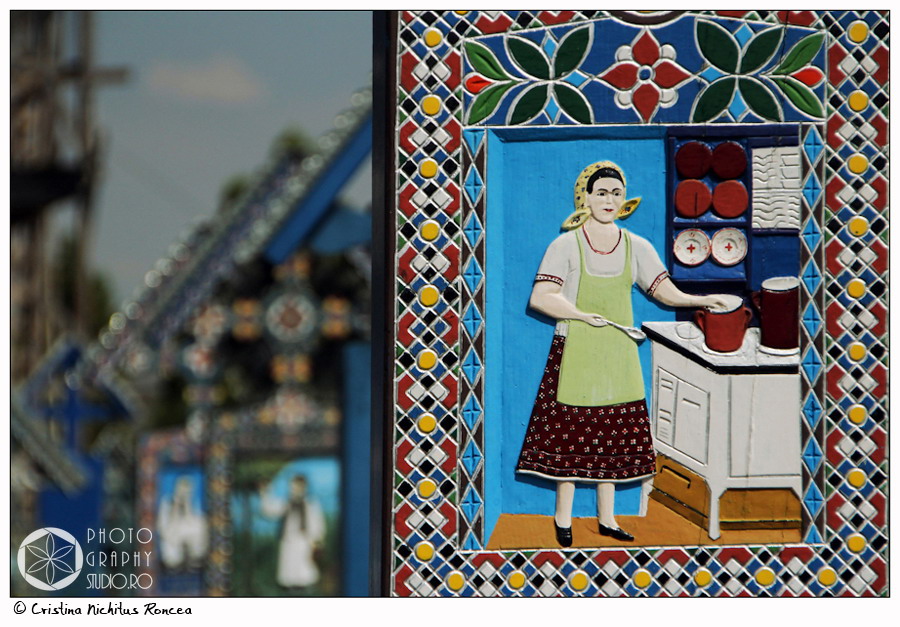
Crosses of The Merry Cemetery photo Cristina Nichitus Roncea
Basically, the folk craftsman concentrates, in a few lines, some full of wit, the most surprising aspects from the life of the deceased, but the text of the epitaph transmits much optimism that could be met by the deceased once he or she crossed over. Some examples are more than convincing about the relationship between life and death:
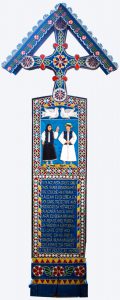
The Mother in Law Epitaph
The Mother in Law
Underneath this cross of stone
Lie my mother-in-law’s bones
Three more days if she had lived
I’d have lied and she would read.
You who here are passing by
Wake her up please do not try
For if home she will come back
I’ll again be full of nag
But this way I will behave
So she’ll stay inside her grave
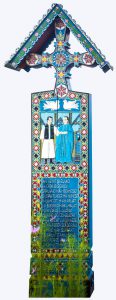
The Church Man
The Church Man
Here I came too, just as well
In front of the church’s bell
I lie here with my closed eyes
Stan Toader I was baptised
Long as how the world I crossed
To the church I wanderred most
While the priest worked at his post
He counseled with me so close
Always prayed to God so strong
To deliver me from wrong
Harm to no one have I tossed
Far and wide as I have crossed
For in all the life I’ve been
Many things indeed I’ve seen


